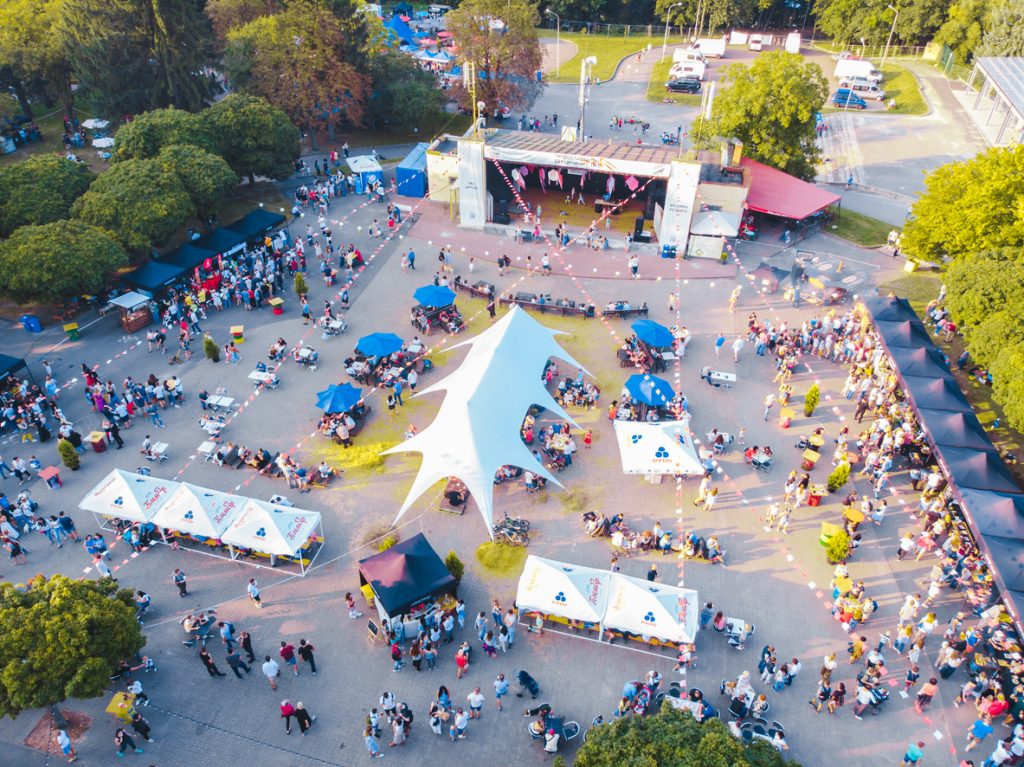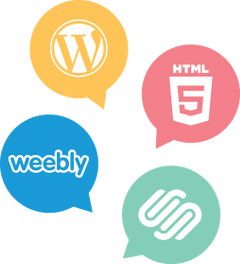
How to Write Event Descriptions That Drive Member Attendance
Nothing about event planning is simple, but advertising and promoting can sometimes be the most daunting parts of the job. If you can’t find an effective way to get people excited when they click on your email invite or see the event promotion on social media, you might experience low turnout for the event.
Although managing an event can be difficult, MembershipWorks’ membership management software helps companies to easily post events online and convert website visitors into event attendees. However, a website is not enough to attract attendance; the content also plays a critical role. Small details, like the event description, shouldn’t be overlooked. This article breaks down this key feature of promoting a future event and steps to help inject more personality into your descriptions and drive event attendance.
What is an Event Description?
An event description is a text or copy that tells audiences all the essential details about your event. These details should come together so that it compels potential attendees to register. But more than driving up attendance, a good event description can pique the interest of non-members and even the press.
In a nutshell, an event description should cover the who, what, why, where, when and how of your event to give potential attendees reasons to show up.
Examples of Effective Event Descriptions
To better help you visualize what a good event description looks like, here are two examples:
Fighting For a Better Tomorrow: Virtual Webinar Series
Calling All Climate Warriors! Youth for Climate Justice is hosting a series of webinars where we feature three climate justice-focused initiatives spearheaded by young community organizers. Discover local movements in your community, learn about effective ways to communicate with legislators and lead the charge in climate justice! Series dates: April 20, May 16, June 21
Date: April 20, 3 pm PT
Where: Streamed live on Zoom; register for the link
Cost: Free
Guest speakers: Adrien Young, project manager of the Green Bottle Movement; Kim Chul-San, president of legal consultancy For Tomorrow; and Elena Ignacio, spokesperson for the One Planet advocacy organization.
Register now (this call to action link should be a button for good visibility)
Let Your Colors Fly! A Rainbow-Hued Fun Run for the Pride Brigade
The Pride Brigade, Springfield’s LGBTQ+ pride organizers, presents Let Your Colors Fly, a color run fundraiser for the 2022 Springfield Pride Festival. Put your sneakers on, grab a friend and join an explosion of rainbow-tastic colors – all while supporting a good cause! Costumes are encouraged and welcome.
Runners and walkers can choose from a 3K, 5K or 10K route. Race day is June 12, 2024; gun start is at 7 am.
Each runner’s kit contains:
- A race bib
- A race shirt designed by local mural artist Kenva Rivas
- A finisher’s medal (presented at the finish line)
- A bag
Proceeds from registration will go to funding the 2022 Springfield Pride Festival.
In case of bad weather, our alternate date is June 19th.
Register by May 1st for the Early Bird Rate of $35; price increases to $45 on May 2nd.
Sign Up Now!
Why are Event Descriptions Important?
Organizations mount events with a specific goal in mind, whether it’s to launch a new campaign, strengthen member relations or raise funds for a cause. To reach all these goals, events need attendees. But with sparse, dull and vague event descriptions, it can be hard to stir interest and excitement from potential attendees.
With a clear, concise and compelling event description, you can convince people that your event can add value to their lives and your event is worth their time. An effective event description can also lead to media coverage and more shares on social media. People who might not have heard of your event or even your organization will be more likely to find that your event is exactly what they were looking for.
What are the Key Elements of an Event Description?
A good event description should answer the following questions:
- Who: Who put together the event? Who is it for? Who should attend?
- What: What is the event called? What can guests expect to get out of the event? What are the event activities? What should they bring with them, if anything?
- Where: Where will the event be held? How can you get there? What are parking recommendations or instructions? If the event is online, how can the event link be accessed? Will it be indoors or outside? If outside, is there an alternate rain date or plan for bad weather?
- When: When is the event happening? What time does it start? What time is it expected to end? Is there a schedule of happenings within the event that should be shared up front to help them understand and anticipate the event?
- Why: What is the purpose of the event? Why should someone attend the event? Answer the question of “What’s in this for me?”
- How: How much does it cost? How does one register?
For the why, you can offer the following answers: knowledge gain, community building/networking, bridging gaps, seeking inspiration, and having emotional experiences. According to Future Meeting Space’s study, Creating Meaningful Events in Challenging Times, these were the main event topics for corporate meeting planners in 2023.
Apart from answering these questions, you should also include event hashtags for attendees to use when they talk about your event on social media.
Images Tell the Story
Don’t forget to add inviting photos to your description; perhaps you have photos from a similar prior event to include. Generally try to avoid stock photos as they are less compelling than photos of real events and attendees. Consider commissioning a designer to make neat graphics for you to use on social media to promote the event. Some events even have their own logo. If you are going to promote your event offline as well, you may want invitations or posters designed and printed. Before engaging a designer, look at all of the places you’ll need to post the image. Consider that you’ll need different dimensions for different social platforms. For example, you may want a horizontal header image to include on your Facebook event, a square image for Instagram and something more vertical for a story.
If you are planning a gathering that you hope will become an annual event, be sure to hire a photographer so you can use the images from this year’s event for next year. Even if it’s not an annual event, you can use the photos in an annual report or on your website. It’s not unheard of to either have a photography release statement as a part of the event registration process or paper releases that your photographer can ask photo subjects to sign. This way you’ll have written permission to use attendee photos in marketing materials.
6 Simple Steps to Writing a Compelling Event Description
Need a thorough guide to writing a solid event description? All you need are these six simple steps:
1. Know Your Goal
Before you can even begin to write your event description, make sure you know precisely why your event is taking place. This will help you determine the tone and messaging of your copy.
Here are some of the top reasons organizations mount events:
- To raise awareness about a cause: If your nonprofit is geared towards funding research for an illness or providing support to an underprivileged community, an event is an excellent way to spread the word about what you’ve done, what you plan to do and what you’ve learned in your time immersed in your cause.
- To launch a new campaign: Similarly, if you’re launching a new campaign, whether on the ground or online, an event is a good way to get more people talking about and sharing your campaign.
- To raise funds: Fundraisers can generate a lot of revenue for nonprofits, but they can also be expensive to mount. According to the National Research Collaborative, 82 percent of nonprofits hold fundraising events to gain contributions and shed light on their causes. A good event description should compel people to show up and help raise funds for the organization. Set fundraising goals ahead of your event and measure your success afterward.
- To connect with new and old members: If you want to bolster member engagement or get non-members interested in joining your organization, an event is a great way to do so.
- Get support from your community: An event that engages local resources (i.e., local food businesses, suppliers and entertainers) can build community and offer a space for people to connect in a fun and meaningful way. A successful event leaves a good impression on people in your immediate area, allowing you to recruit more members or donors locally. Don’t forget to leverage the connections of those providing support to the event whether they are a vendor, volunteer or attendee. Ask everyone to share the event in advance through their social channels.
2. Understand Your Audience Demographic and Learn Where They Gather Online
One of the most fundamental components of a successful marketing campaign is knowing your target audience. This knowledge can help you hone in on the brand persona and message that your target market connects with the most.
What Drives Your Audience to Action?
Consider how your organization’s organization’s mission, vision, brand identity align with your target audience. Look for the connection points that make your organization or event compelling to a given audience. Looking at the target audiences from the sample event descriptions above:
- The climate webinar series is targeting young climate activists. The event taps into their interest in addressing climate change while also providing peer leaders to connect with and learn from.
- The fun run targets LGBTQ+ people and their supporters who like outdoor exercise. It helps provide a space for LGBTQ+ people to gather with like-minded individuals and taps into the popularity of Pride parades and festivals.
Look up similar events on social media and study what kind of audiences favor events like yours. Look at the way these events are marketed — study the wording used, the event branding and the overall tone. While you’re there, look for influencers who may want to help promote your event. Are there chat rooms, specific social media platforms, online groups or other places your target audience gathers? These are all places you’ll want to leverage to share the message about your event.
For membership-based organizations, look back on old member surveys, review feedback forms and look at the demographic information of past participants or members in general. This will help you speak to their wishes and needs when crafting your description wording.
3. Find Inspiration
Don’t know how to write your event description intro? Stuck in a rut? Or does something feel off? You can always head over to Facebook, Eventbrite and other similar sites and gain inspiration from events that are similar to yours.
When searching for inspiration online, don’t forget to:
- Examine the first thing that caught your eye or piqued your interest in the event description
- Study how they structure their descriptions
- Draw inspiration from their event branding such as their header, posters, videos, etc.
- Pinpoint the things that bores you or feels unnecessary
4. Tell a Story
It can be tempting to hype an event up as “the best” or “the most exciting” thing out there, but using vague hyperboles can decrease your credibility. They don’t say much about your event either. Instead, just present your audience with the facts. Let them decide whether these pique their interest or not.
Of course, you can’t just present the facts coldly either. You have to strike a balance between informative and exciting. One good way to do this is by looking at different storytelling structures, such as the inverted pyramid.
A structure used primarily by news journalists, the inverted pyramid presents information in descending order of importance, allowing audiences to quickly grasp the most important details and decide whether they want to keep reading. This also makes it easier for the writer or editor to cut out any unnecessary details.
The inverted pyramid consists of:
- A lede, or the essential details
- The body, or other crucial points
- The tail, or other interesting but less essential information
5. Cover all of the Important Details
When writing an effective event description, make sure to use a punchy, attention-grabbing headline. Your headline is likely the first thing your audience will read about your event – it’s the make or break point. Make sure you grab and hold your audience’s attention with just a few words. To do so, avoid using generic language (you want to stand out, not blend in) and try not to be vague – present your audience with new and useful information.
It also helps create a sense of urgency, especially for an annual event or a biannual event. An event is usually a one-time thing, and oftentimes, there are deadlines for things like ticket sales, registration, and the like. Use phrases like “limited offer” or “early bird rate” to motivate audiences to act fast. This will also help you secure more attendees in a shorter amount of time.
6. Keep it Simple
Today, people are constantly bombarded with information they don’t want or need. If something takes too much time or effort to read, most people won’t even bother clicking. To survive in the attention economy, you have to keep it simple.
Here are some key points to consider:
- Huge blocks of text are not fun to read. Organize your writing with headings or bullet points instead.
- Always make an outline. You’ll want your writing to flow, not jump around from one topic to another.
- Don’t use overly flowery words, intimidating jargon or acronyms that may not be understood by all potential attendees. Make sure your copy is accessible to a broad audience.
- Learn to edit or have someone else on your team review your work. Often it takes a fresh pair of eyes to recognize gaps in our writing. Better yet, ask someone who isn’t part of your organization to take a look at your copy. This way, you get an outsider’s perspective who can tell you if your event description makes sense to people outside of your organization.
- Don’t be afraid to kill your darlings – writer-speak for “be ready to cut out anything that doesn’t work!”
Conclusion
Event descriptions are usually the first impression your guests will have of an upcoming event. They provide potential attendees with enough information to let them decide whether they want to add this event to their calendar. Get it right, and you’re sure to boost your attendance. And don’t forget to express gratitude! After your event, you may want to send a thank you letter to event attendees and donors, where you can include photos and highlights from the event as well.




Comments are closed.